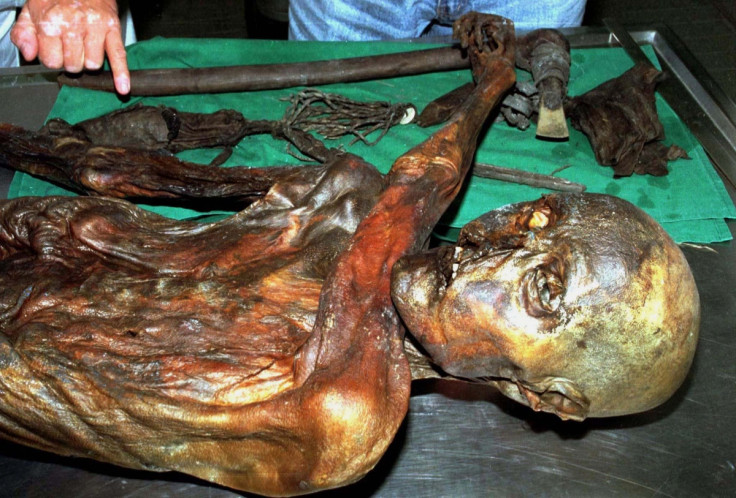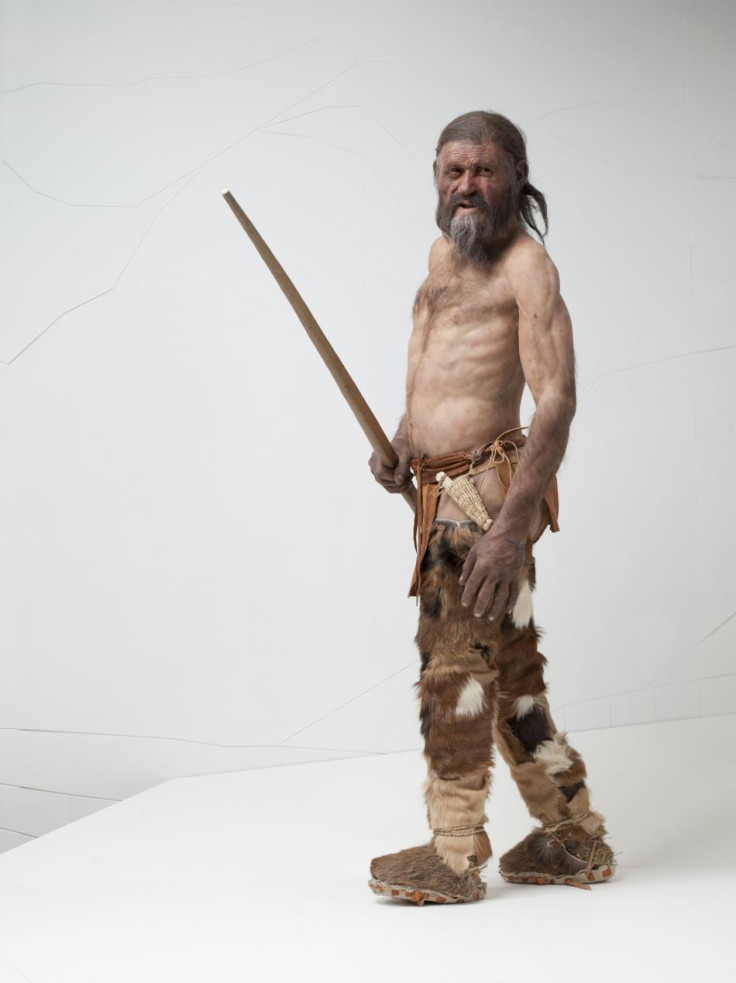New tattoos found on Otzi the Iceman support prehistoric acupuncture theory

Otzi the Iceman had a total of 61 tattoos during his life 5,300 years ago, new scans have revealed, supporting the theory they served as a very early form of acupuncture.
Published in the Journal of Cultural Heritage, researchers used "multispectral photographic imaging techniques" that were capable of seeing previously unknown tattoos the mummy had.
Marco Samadelli and colleagues from the South Tyrol Museum of Archaeology in Italy have announced he had a total of 61 tattoos divided into 19 groups across his body – previous estimates have ranged between 47 and 60 markings.
Otzi was discovered in 1991 by hikers in the Otzal Alps on the border of Austria and Italy. He had been preserved in a glacier and has been the subject of research for the last 20 years.
He was about 45 years old when he was murdered – researchers found he had been shot in the back with an arrow then bludgeoned to death. Scientists also found he suffered from a range of ailments, including Lyme disease, gum disease, gallbladder stones and whipworms in his colon.

Previously, scientists have suggested the tattoos – lines and crosses – were made by making small incisions to the skin then rubbing them with charcoal and served as a very primitive form of acupuncture.
Eighty per cent of the tattoos had been found along acupuncture meridians used to treat back pain and abdominal problems, which Otzi suffered from, Red Orbit reports. If correct, the tattoos would predate the first recorded use of acupuncture in China by 2,000 years.
The latest tattoos were found on the lower right rib cage and consist of four parallel lines between 2-2.5cm in length. They represent the first tattoo found on the frontal part of Otzi's torso.
While not located above a joint, it is not thought these latest tattoos were related to the treatment of lower back pain.

However, Lars Krutak, an anthropologist who has published a book about the medicinal applications of tattoos, has said they may be on or near other acupuncture points.
Commenting on the findings, Krutak said: "I was intrigued by the possibility that the new set of tattoos were located on or near classical acupuncture points or meridians. If they were, perhaps these could be traced to Otzi's known pathological conditions, such as gallbladder stones, whipworms in his colon and atherosclerosis."
He consulted Gillian Powers, an acupuncturist, who said the location of the new tattoos corresponds with treatments associated with whipworms and gallstones.
Although Samadelli did not directly address the possible relationships between the new tattoos and specific acupoints, they concluded: "It cannot be ruled out that the Iceman's tattoos were indeed applied as a therapeutic treatment. In future studies, the location of the new tattoos and its relation to acupuncture points and/or meridians should be further explored and discussed."
© Copyright IBTimes 2025. All rights reserved.






















